Select Language
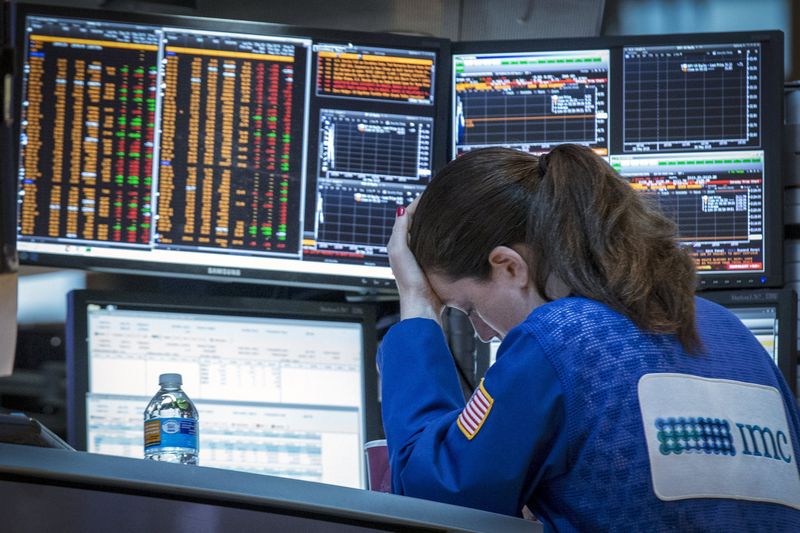
Investing.com-- U.S. stock index futures fell Monday evening after steep declines on Wall Street, as investors weighed recession risks stemming from President Donald Trump’s tariff policies.
S&P 500 Futures fell 0.5% to 5,595.0 points, while Nasdaq 100 Futures dropped 0.8% to 19,306.0 points by 20:02 ET (00:02 GMT). Dow Jones Futures were largely unchanged at 41,965.0 points.
Recession fears spark sell-off, Nasdaq slumps 4%
A Reuters poll showed that economic risks are escalating for Mexico, Canada, and the U.S. due to the turbulent rollout of Trump tariffs, creating significant uncertainty for businesses and policymakers.
Concerns over inflation in the U.S., which were already growing, have intensified, making it more likely that the Federal Reserve will hold off on policy changes for the foreseeable future. Meanwhile, the risk of recession is increasing across all three countries, according to the survey.
Trump has refrained from predicting whether the U.S. might experience a recession in 2025 amid escalating trade tensions.
Stock markets experienced notable declines on Monday, with the S&P 500 falling 2.7%, the Dow Jones Industrial Average 2%, and the NASDAQ Composite slumping 4%, primarily driven by substantial losses in major technology companies.
Tesla Inc (NASDAQ:TSLA) shares saw a 15% drop, while market darling NVIDIA Corporation (NASDAQ:NVDA) stocks fell 5.1%.
Broadcom Inc (NASDAQ:AVGO) shares fell 5.4%, while Arm Holdings (NASDAQ:ARM) stock declined 7.3%.
Tracking the downturn in Bitcoin, shares of Strategy, previously known as MicroStrategy (NASDAQ:MSTR), slumped 16.7%. Coinbase Global Inc (NASDAQ:COIN) stock plunged 17.6%.
Govt shutdown risks add to the negative mood; US CPI awaited
A government shutdown is possible if Congress fails to pass a temporary funding bill before the fiscal deadline on March 14.
The Republican-controlled House introduced a six-month stopgap spending bill on March 8, with a vote scheduled for Tuesday.
If approved by Congress, the proposal will require 60 votes in the Senate to reach Trump’s desk, necessitating some Democratic support to avert a government shutdown.
Meanwhile, market participants now keenly await the crucial consumer price inflation report due on Wednesday, which will provide key insights ahead of the Federal Reserve’s interest rate decision scheduled for next week.
Last week, Fed Chair Jerome Powell indicated that the central bank would maintain a patient stance on interest rates, saying the central bank was cautiously assessing Trump’s recent economic policy changes, including tariffs and federal worker layoffs.

SYDNEY (Reuters) - Australian consumer sentiment hit a three-year high in March as slowing inflation and the first interest rate cut in over four years helped lift the gloomy mood for consumers, a survey showed on Tuesday.
The Westpac-Melbourne Institute index of consumer sentiment rose a solid 4% in March from February. The index was 13.6% higher on a year earlier, although at 95.9 showed pessimists still outnumbered optimists.
The Reserve Bank of Australia last month cut interest rates by a quarter-point to 4.1%, having held them steady for over a year. However, policymakers still warned that prospects of further easing are not guaranteed.
Swaps imply a scant chance that the RBA will follow up with another cut in April, but a move in May is about 80% priced in. Rates are seen reaching 3.5% by the end of the year.
"The RBA’s February decision has bolstered confidence that interest rates will continue to move lower," said Matthew Hassan, Westpac’s head of Australian macro-forecasting.
"Consumers are becoming more positive on the labour market, expectations suggesting a ’soft landing’ has already been achieved."
The breakdown of the survey showed the outlook for family finances over the next year was much better, with the index up 3.2% in the month to 108.3, showing optimists were in the majority.
The survey’s measure of the economic outlook for the next 12 months firmed 3.6%, while the outlook for the next five years jumped 4%.
Buyer sentiment also jumped with the measure of whether it was a good time to buy a major household item jumping 6.9% to 97.1.
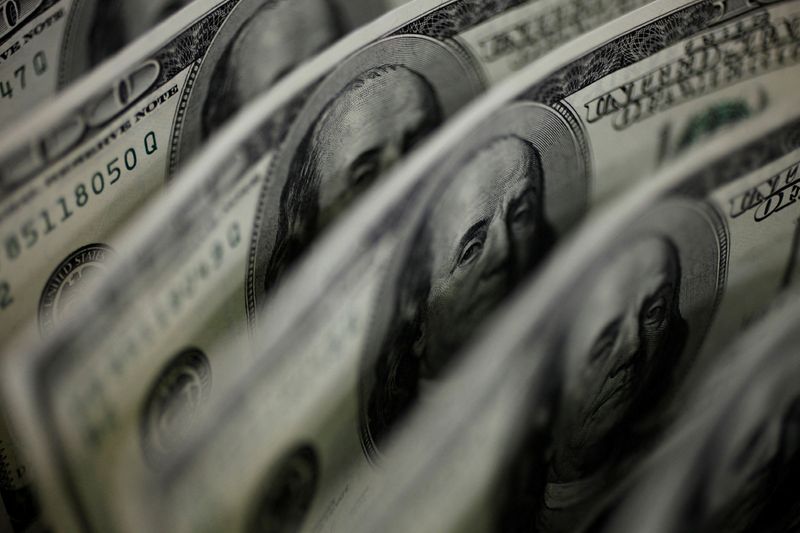
By Ankur Banerjee
SINGAPORE (Reuters) -The dollar was softer on Monday and trading near its lowest level in four months against major currencies as concerns over a global trade war troubled investors, lifting safe havens the yen and the Swiss franc.
Markets have been fixated on trade tensions as U.S. President Donald Trump slapped tariffs on top trading partners only to delay some of them for a month amid growing signs and fears of a U.S. economic slowdown.
That has led to investors losing faith in the U.S. economy which has been outperforming its peers. On currency futures markets, investors have slashed net long dollar positions to $15.3 billion from a nine-year high of $35.2 billion in January.
Risk-averse investors have sought the Japanese yen and Swiss franc instead sending both currencies to multi-month highs. On Monday, the yen was 0.25% firmer at 147.68 per dollar, just below the five-month high of 146.94 it touched on Friday.
The Swiss franc hit a three-month high of $0.87665 on Monday. The euro was steady at $1.0842 after clocking its best weekly performance since 2009 last week boosted by Germany’s game-changing fiscal reforms.
The dollar index, which measures the U.S. currency against six others, was last at 103.83 on Monday, stuck near a four-month low touched last week.
The dollar fell more than 3% last week against major rivals, clocking its weakest weekly performance since November 2022 as investors fret about tariffs and its impact on the economy.
Adding to investor jitters, Trump in a Fox News interview on Sunday declined to predict whether the U.S. could face a recession amid stock market concerns about his tariff actions on Mexico, Canada and China.
Trump’s comments sent U.S. stock futures lower, while the benchmark 10-year U.S. Treasury yields fell 3 basis points in Asian hours, weighing on the dollar.
"If Trump is looking to pursue a weaker dollar, lower yields ... then certainly that adds to this idea that maybe the dollar can’t strengthen or can’t move aggressively higher," said Parisha Saimbi, Asia-Pacific rates and FX strategist at BNP Paribas (OTC:BNPQY) in Singapore.
"FX investors are in a broad de-risking mode."
Investors were also digesting data from Friday that showed U.S. job growth picked up in February, but cracks are emerging in the once-resilient labour market amid a chaotic trade policy.
Nonfarm payrolls increased by 151,000 jobs last month after rising by a downwardly revised 125,000 in January, the Labor Department’s Bureau of Labor Statistics said. Economists polled by Reuters had forecast payrolls advancing by 160,000 jobs after a previously reported 143,000 gain in January.
Citi strategists said the data should keep the Federal Reserve comfortable staying on hold at this month’s meeting, but details of the jobs report, including a rise in the unemployment rate and drop in participation, suggest the labour market could soften further this spring.
"The slowdown in consumer spending, upcoming government job loss and decline in equity prices will likely have the Fed cutting policy rates again in May," they said in a note.
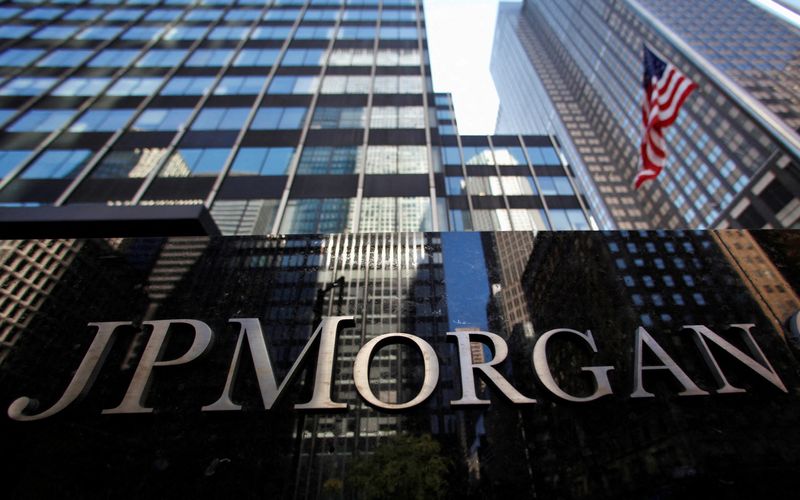
(Reuters) - J.P.Morgan joined Wall-Street peer Goldman Sachs to forecast a boost to the euro area’s economic growth for 2025 on the back of Germany’s fiscal loosening reforms.
Similar to Goldman, JPM expects growth to increase by 0.1 percentage point to 0.8%. For 2026, JPM expects 1.2% growth, up by 0.3 percentage points.
"This revision is primarily driven by Germany, but we also anticipate slightly stronger growth across the rest of the region from spillovers and slightly looser fiscal policy," said JPM economists in a note dated late Friday.
Last week, the parties in talks to form Germany’s new government agreed to try to loosen fiscal rules that would amount to a nearly trillion-euro borrowing boom to fund defence and infrastructure spending.
However, the brokerage also cautioned that uncertainty from Trump’s tariff policy could likely weigh on economic growth in the coming months and estimated a slight uptick to the euro area’s inflation for this year and next.
Making its sixth cut since June, the European Central Bank (ECB) lowered the deposit rate to 2.5% on Thursday, but warned of "phenomenal uncertainty", including the risk that trade wars and more defence spending could fuel inflation, raising the prospect of a pause in its policy easing next month.
In the same note, JPM said it does not expect the ECB to cut rates in April compared to its earlier projection of a 25 basis point cut. The brokerage expects only two interest rate cuts this year - in June and September - versus its prior estimate of three rate cuts.
"We highlight risks that the potential imposition of US tariffs on European goods could also push them to a live meeting in April and back to the back-to-back approach," JPM added.
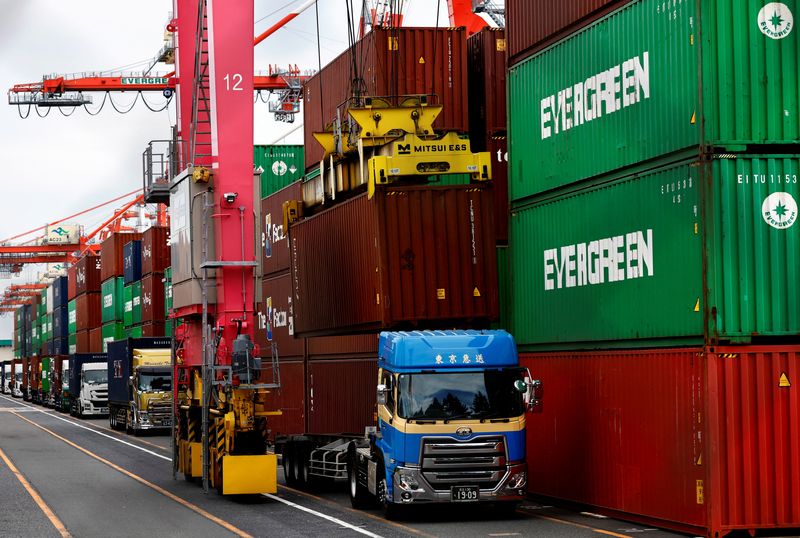
By Leika Kihara
TOKYO (Reuters) - Japan recorded a current account deficit in January for the first time in two years as a weak yen inflated the cost of imports, finance ministry data showed on Monday.
A boost in imports of smartphones and electronic parts in the run-up to the Lunar New Year holiday, which started at the end of January, also pushed up total imports during the month, the data showed.
Japan’s current account deficit in January stood at 257.6 billion yen ($1.75 billion), bigger than a median market forecast for a deficit of 230.5 billion yen, the data showed.
Imports rose 17.7% in January from a year earlier, while exports rose 2.1%, according to the data.
($1 = 147.5000 yen)
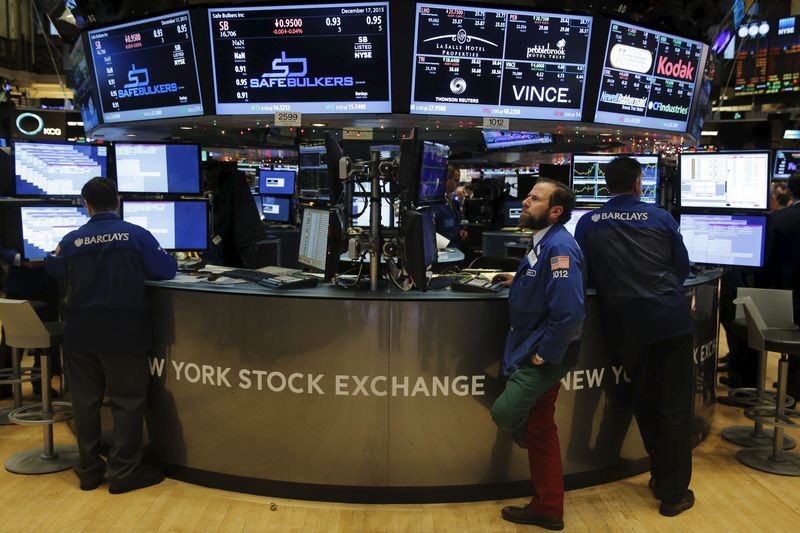
U.S. stock indexes declined on Sunday evening after steep weekly losses on Wall Street, as investors remained wary of uncertainty surrounding President Donald Trump’s tariff policies and mulled over Federal Reserve Chair Jerome Powell’s cautious remarks.
S&P 500 Futures fell 0.7% to 5,735.0 points, while Nasdaq 100 Futures dropped 0.9% to 20,045.0 points by 19:41 ET (23:41 GMT). Dow Jones Futures lost 0.5% to 42,611.0 points.
Investors assess Powell’s cautious comments; Feb jobs data
On Friday, Fed Chair Powell indicated that the central bank would maintain a patient stance on interest rates, acknowledging that the U.S. economy remains in a good place despite elevated uncertainties.
Powell highlighted the Fed’s cautious approach in light of President Donald Trump’s recent economic policy changes, including tariffs and federal worker layoffs.
Recent economic data reflected a mixed picture: the U.S. economy added 151,000 jobs in February, slightly below expectations, and the unemployment rate edged up to 4.1%.
Despite these figures, concerns about weaker labor demand and potential layoffs persisted.
The Federal Reserve’s dual mandate—to maintain low inflation and high employment—faces challenges amid these uncertainties. Powell underscored the importance of waiting for clearer economic signals before making policy decisions.
Market participants now keenly await the crucial consumer price inflation report due this week, which will provide key insights ahead of the Fed’s interest rate decision scheduled for March 18-19.
Trump’s shifting trade policies fuel market turmoil
Major U.S. stock indexes experienced heavy weekly losses last week, when Trump imposed 25% tariffs on Mexico and Canada, but later exempted most of the goods for a month, creating uncertainty around his trade policies.
The S&P 500 declined nearly 3% last week, closing at 5,770.20 points, while the Dow Jones Industrial Average fell by 2.2% for the week to end at 42,801.72.
The NASDAQ Composite experienced a 3.5% weekly drop.
Trump also increased tariffs on Chinese goods, which prompted retaliatory levies from China. He is set to implement worldwide reciprocal tariffs from April 2, which could further erode market sentiment.
Meanwhile, Commerce Secretary Howard Lutnick said on NBC’s “Meet the Press” on Sunday that Trump is steadfast in applying tariff pressure on Mexico, Canada, and China due to their handling of fentanyl.
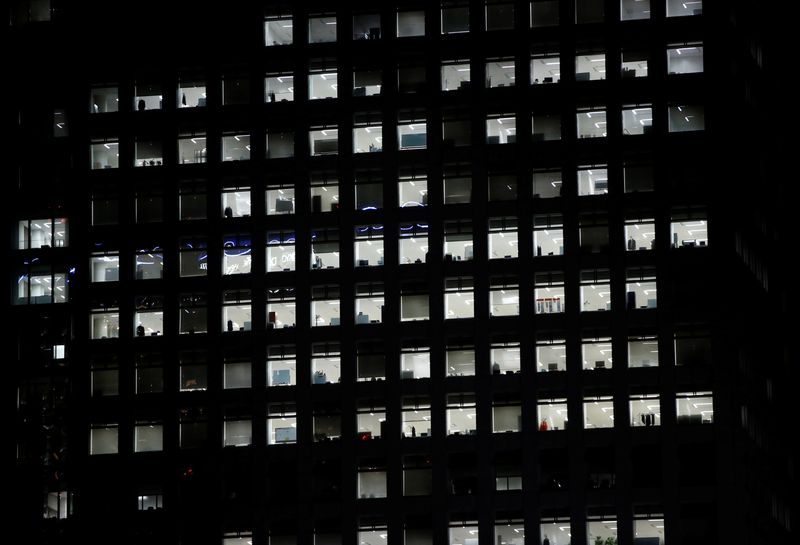
By Kantaro Komiya
TOKYO (Reuters) - Japan’s real wages fell in January after two months of slight gains, data showed on Monday, days before the annual rounds of pay negotiations held each spring culminate at the country’s major firms.
Despite regular pay rising the most in more than 30 years and overtime pay increasing, lifting nominal wages, inflation at a two-year high dragged down real wages - the indicator policymakers see as key to achieving consumption-driven economic growth.
The Bank of Japan is widely expected to keep interest rates unchanged at its next policy review on March 18-19, as officials repeatedly cite the need to gauge the sustainability of wage growth after the central bank’s January rate hike.
Inflation-adjusted real wages, which determine consumers’ purchasing power, dropped 1.8% in January from a year earlier, labour ministry data showed. The decline followed a revised 0.3% rise in December and 0.5% gain in November.
The consumer inflation rate the ministry uses to calculate real wages, which includes fresh food items but not rent costs, rose to 4.7% year-on-year - the highest reading since January 2023.
Regular pay, or base salary, rose 3.1% in January following December’s revised 2.6% increase and marking the biggest jump since 1992, the data showed.
Overtime pay, a barometer of corporate activity strength, also jumped 3.1%, after a revised 0.8% gain in December.
Special payments, mainly made up of volatile one-off bonuses, were down 3.7%. Total cash earnings, or nominal pay, rose 2.8% to 295,505 yen ($2,004) on average, slowing from December’s revised 4.4% rise, due largely to the drop in special payments.
Japan’s largest labour group last week said its member unions were demanding an average 6.09% pay hike, their boldest claim in more than 30 years.
In Japan, annual wage talks between management and labour unions conclude around mid-March among major firms, setting a standard for the salary negotiations of non-unionised workers and smaller enterprises.
The effect of these annual spring talks typically begins to show up in wage statistics for April or later, according to a labour ministry official.
($1 = 147.4300 yen)
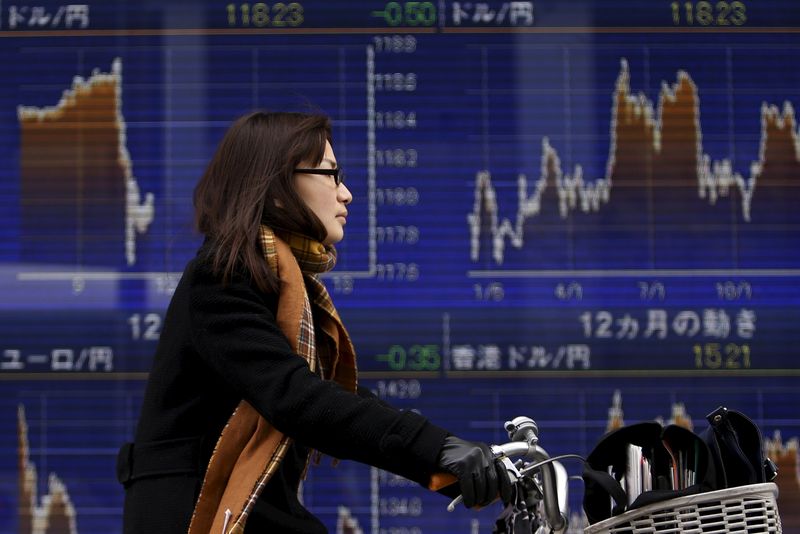
Investing.com-- Most Asian stocks fell on Friday tracking Wall Street’s overnight slump, as investor uncertainty deepened over U.S. trade policies after President Donald Trump postponed 25% tariffs on most Mexican and Canadian goods just two days after imposing them.
Major U.S. stock indices closed sharply lower on Thursday over President Donald Trump’s fluctuating tariff policies.
Trump delays tariffs on Mexico, Canada; sparks broader sell-off
On Tuesday this week, President Trump escalated trade tensions by imposing 25% tariffs on Canadian and Mexican goods, and increasing levies on Chinese products to 20%.
However, he later softened his stance, by delaying 25% tariffs on vehicle imports from Mexico and Canada, offering temporary relief to global markets.
Trump, on Thursday, announced a temporary exemption for goods imported from Canada and Mexico under the United States-Mexico-Canada Agreement (USMCA), delaying the implementation of a 25% tariff until April 2.
The initial imposition of tariffs had already unsettled global markets, and the subsequent postponement has added to the volatility, leaving investors uncertain about future trade relations and economic policies.
Japan’s Nikkei 225 plunged 2.1% on Friday, while TOPIX declined 1.2%.
Australia’s S&P/ASX 200 index fell 1.6%.
Hong Kong’s Hang Seng index inched 0.2% lower, after jumping 3.2% in the previous session.
China’s Shanghai Composite edged 0.1% lower, while the Shanghai Shenzhen CSI 300 lost 0.3%.
South Korea’s KOSPI was trading 0.4% lower, while India’s Nifty 50 Futures edged up 0.2%.
Data barrage next week: CPI data from China and India; revised GDP for Japan
China’s National People’s Congress will conclude on Tuesday. February consumer price and producer price inflation data are scheduled for Sunday, March 9.
India’s February consumer price inflation data is also due next week.
Japan’s fourth-quarter revised gross domestic product (GDP) data is scheduled for release on Tuesday.
“Fourth quarter GDP is likely to be revised downward slightly from 0.7% quarter on quarter, seasonally adjusted, to 0.5% as capital spending comes in weaker than expected,” ING analysts said in a note.
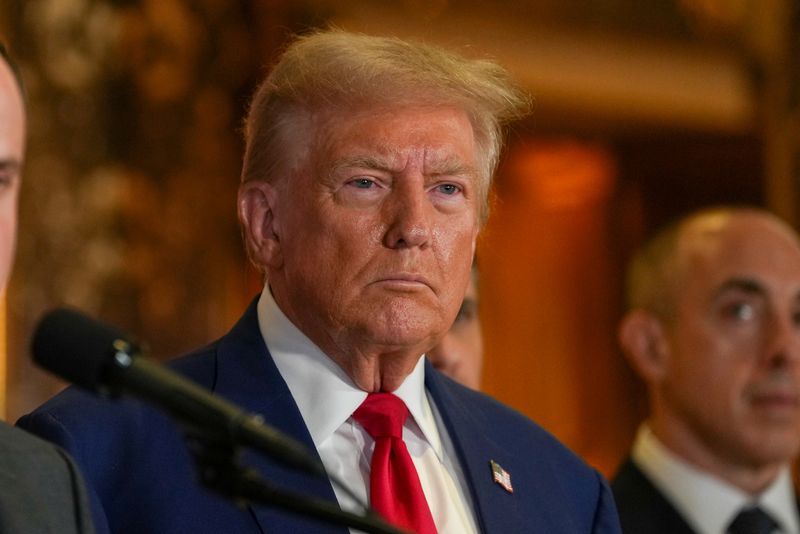
U.S. President Donald Trump has signed an executive order to establish a strategic Bitcoin reserve, White House artificial intelligence and crypto czar David Sacks said on Thursday evening.
The formation of the reserve will not entail any government purchases of crypto, Sacks said, although he did state that the Secretaries of Treasury and Commerce were now authorized to develop "budget-neutral" strategies to buy Bitcoin, as long as the purchases did not cost taxpayer money.
The reserve will be capitalized with Bitcoin seized by the federal government as part of criminal or civil asset forfeitures, Sacks said, and will not involve any new crypto purchases.
The government will not sell any of its Bitcoin deposited into the reserve, Sacks said in a social media post, and the Bitcoin pile will be kept as a store of value, akin to the government’s gold holdings.
Sacks said the government held about 200,000 Bitcoins, which is valued at about $17.3 billion based on Bitcoin’s current price. The world’s largest crypto fell nearly 4% after Sacks’ post and traded around $86,721 by 19:27 ET (00:27 GMT).
Sacks said that there had never been an audit of the government’s Bitcoin holdings, and said that Thursday’s order will also direct a “full accounting” of the government’s digital asset holdings.
Beyond Bitcoin, Sacks said Trump’s executive order will also entail the creation of a U.S. digital asset stockpile, which will be composed of other digital assets seized by the government. This stockpile will also not involve any new purchases of digital assets.
Trump had last week said four other cryptos- Solana, Cardano, XRP, and Ether- will be included in his planned reserve.
The Department of Justice holds a bulk of the U.S.’ confiscated crypto, specifically Bitcoin, and has sold some of its holdings on the open market in intermittent sales. Sacks claimed that these sales were “premature,” and had cost U.S. taxpayers over $17 billion in lost value.
“Now the federal government will have a strategy to maximize the value of its holdings.”
Sacks’ statement comes just before a White House crypto summit, which is scheduled for Friday. The summit is expected to provide more cues on Trump’s plans for crypto regulation, after he ordered his cabinet to explore a regulatory framework for the industry.
The Bitcoin reserve sees Trump deliver on some of his campaign promises of crypto-friendly regulation. But an absence of any government crypto purchases indicates that the reserve will have little actual bearing on crypto markets.
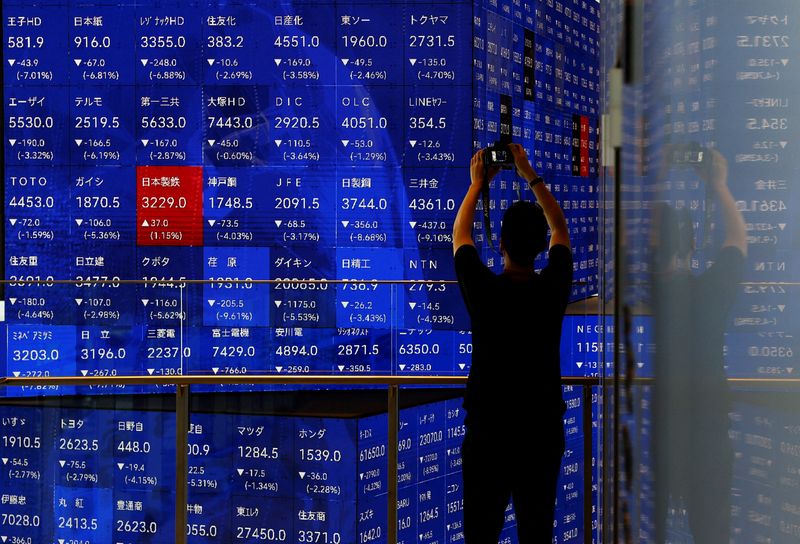
By Rae Wee
SINGAPORE (Reuters) - Investors were met with some calm on Friday after a turbulent week besieged by U.S. trade policy confusion and a global rise in borrowing costs, as a steep selloff in bonds abated and currencies steadied, though stocks tracked Wall Street lower.
Overnight the Nasdaq confirmed it has been in a correction since peaking last December, as U.S. stocks face headwinds from a darkening growth outlook in the world’s largest economy and uncertainty over U.S. President Donald Trump’s tariff policies.
Trump on Thursday suspended the 25% tariffs he imposed this week on most goods from Canada and Mexico until April 2 - the day he has threatened to impose a global regime of reciprocal tariffs on all U.S. trading partners.
Trump’s fast-changing trade policy has sent markets into a tailspin, though currencies like the yen and the Swiss franc, as well as gold, have been among the few assets investors have flocked to as they seek out safety.
The Japanese currency was perched near its strongest level in five months at 147.95 on Friday, on track for a 1.8% weekly gain, while the Swissie scaled a three-month top of 0.8822 per dollar.
Gold prices eased slightly, but at $2,904.62 an ounce, were still not far from a record high. [GOL/]
"The rapidly shifting sands of U.S. tariffs are turning into quicksand for businesses in the U.S., Canada and Mexico to drown in," said Tony Sycamore, a market analyst at IG.
"I’m not particularly confident at this point in time committing money to the market because there is just so much uncertainty out there. It’s a horrible, horrible backdrop for investors to be operating in."
A sharp selloff in European bond markets triggered by Germany’s plans for a huge spending package showed some signs of tapering on Friday, with bund futures jumping more than 0.8% and French OAT futures up 0.7%. Bond yields move inversely to prices.
In Japan, government bonds extended their selloff, though to a smaller degree than in the previous session.
The 10-year Japanese government bond (JGB) yield rose 1.5 basis points to 1.53%, its highest level since June 2009, while the 20-year yield added 2 bps to a more than 16-year high of 2.22%. [JP/]
The surge in European borrowing costs this week has in turn sent the euro on a tear, with the common currency headed for its largest weekly gain in nearly five years on Friday at more than 4%. It last traded 0.07% higher at $1.0794.
The European Central Bank (ECB) on Thursday cut interest rates again but warned of "phenomenal uncertainty", including the risk that trade wars and more defence spending could fuel inflation, raising the prospect of a pause in its policy easing next month.
"The ECB finds itself in a challenging position between the threat of U.S. tariffs in the near-term that could warrant further policy rate cuts - and a move into stimulative territory - and the growing commitment to higher defence spending over the next several years," said Mark Wall, chief European economist at Deutsche Bank.
"This environment requires a deft hand on the monetary policy lever and the preservation of policy optionality."
ASIA STOCKS UPBEAT
MSCI’s broadest index of Asia-Pacific shares outside Japan last traded 0.5% lower, though was on track for a weekly gain of more than 2.5%, which would mark its largest increase in nearly six months.
The rise was helped by a rally in its Chinese counterparts as investors continued to pile into artificial intelligence shares and welcomed new policy support from Beijing.
China’s CSI300 blue-chip index fell 0.2%, but was set to rise 1.5% for the week, while the Shanghai Composite Index was similarly on track for a 1.85% weekly gain.
Hong Kong’s Hang Seng Index rose 0.3% and was headed for a more than 6% surge for the week.
"We expect significant fiscal easing this year, with increased priorities on consumption and high-tech manufacturing, but acknowledge this is different from a ’bazooka’," Goldman Sachs analysts said in a note.
Elsewhere, Japan’s Nikkei slid 1.85%.
Trade tensions aside, the focus for investors on Friday will also be on February’s U.S. nonfarm payrolls report, which will provide further clues on the health of the world’s largest economy.
Expectations are for 160,000 jobs to have been added last month, following January’s 143,000 rise.
Investors have ramped up bets of further Federal Reserve rate cuts this year following a slew of weaker-than-expected U.S. economic data and worries about the impact of Trump’s tariffs, with Fed funds futures now showing just over 77 bps worth of easing priced in this year.
That has in turn sent the dollar on the decline, with the greenback set for a weekly drop of more than 3% against a basket of currencies.
In commodities, Brent futures rose 0.27% to $69.65 a barrel, while U.S. West Texas Intermediate crude futures ticked up 0.2% to $66.49 per barrel. [O/R]

